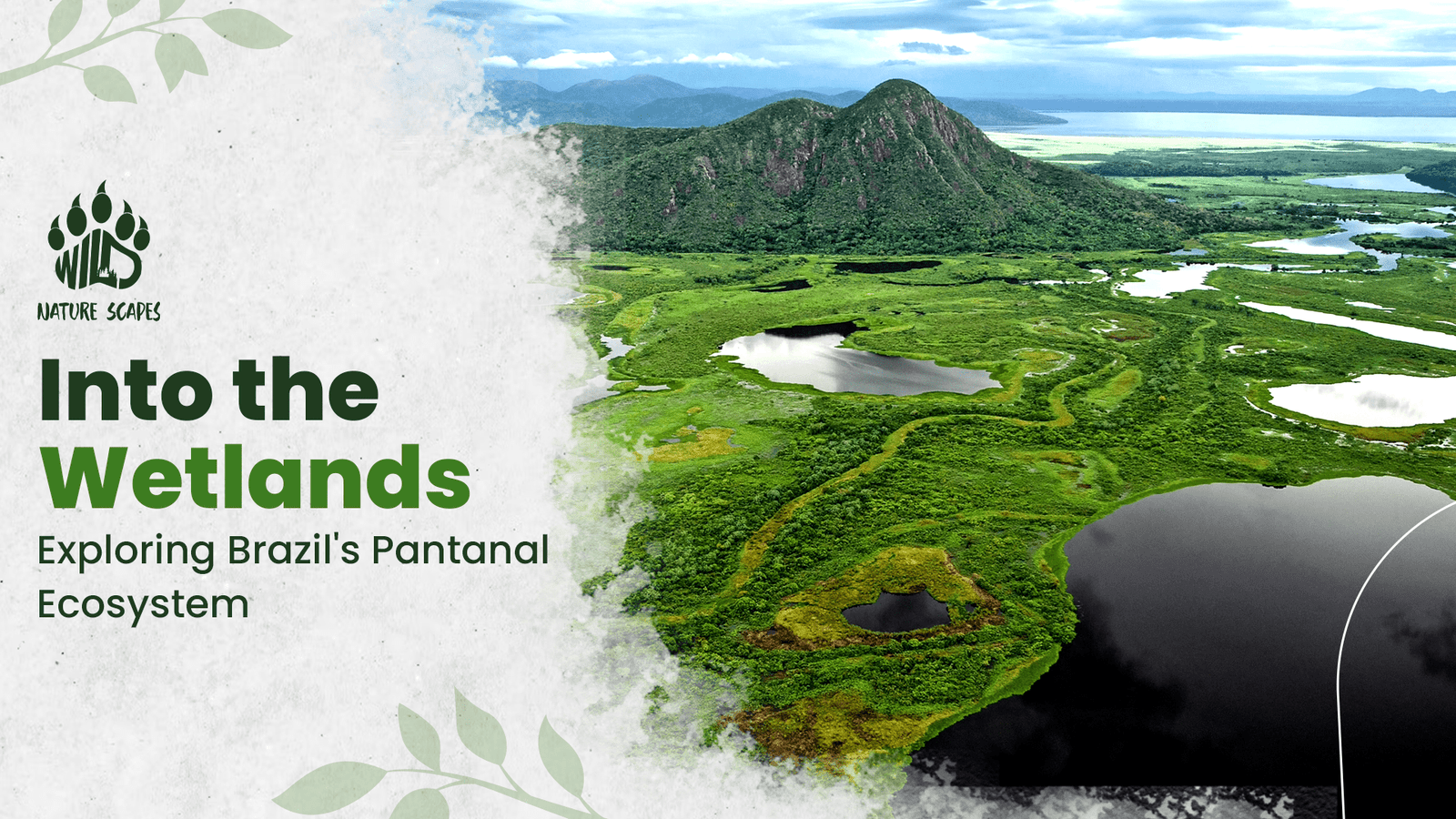In the South American land of Brazil, lies a natural wonder that has captivated the hearts of wildlife enthusiasts and nature lovers from around the globe—the Pantanal. As the world’s largest tropical wetland area, the Pantanal offers a unique and diverse ecosystem that is unparalleled in its beauty and richness. In other words, it is a haven for wildlife enthusiasts.
Wild Nature Scapes invites you to our America’s Big Cats and Wildlife circuit where we can explore this enchanting paradise as we unravel the mysteries of the Pantanal, exploring its landscapes, weather, and the myriad of species that call it home.
Landscape: A Waterlogged Eden
The Pantanal, often referred to as the world’s largest tropical wetland area, is a sprawling mosaic of lakes, rivers, and marshes. During the wet season, the region transforms into an expansive waterlogged landscape, with water stretching as far as the eye can see. This inundation gives birth to a remarkable phenomenon where the wildlife and plant life have adapted to thrive in both submerged and terrestrial conditions.
One of the most striking features of the Pantanal is its seasonal flooding. The wetlands expand and contract with the rains, creating a dynamic environment that supports an incredible array of flora and fauna. Imagine vast stretches of water dotted with giant Victoria water lilies, their leaves providing a safe haven for tiny frogs and insects.
Weather: Nature’s Rhythmic Dance
The Pantanal experiences a tropical wet and dry climate. During the wet season, which typically spans from October to March, the region receives heavy rainfall, causing the rivers to swell and the wetlands to flood. This period of abundance is a boon for the Pantanal’s inhabitants, as food and water become readily available.
Conversely, the dry season, from April to September, brings arid conditions. The water levels recede, concentrating wildlife around the remaining water sources. This seasonal shift creates ideal opportunities for wildlife enthusiasts to witness incredible concentrations of animals, making it the perfect time for wildlife safaris and birdwatching.
Flora: The Pantanal’s Green Tapestry
The Pantanal boasts a diverse array of flora, adapted to both aquatic and terrestrial habitats. Towering emerald canopies of Brazil nut trees provide shelter for a myriad of species, while delicate water lilies grace the wetlands, adding a touch of elegance to the waterscapes. The Pantanal’s flora isn’t just visually appealing; it plays a vital role in supporting the region’s wildlife, providing food, shelter, and essential nutrients for the ecosystem’s inhabitants.
Fauna: A Haven for Wildlife Enthusiasts
The Pantanal is a haven for wildlife enthusiasts, offering unparalleled opportunities to observe iconic and elusive species. Jaguars, with their distinctive rosette patterns, stealthily roam the wetlands, symbolizing the raw power of nature. Capybaras, the world’s largest rodents, graze alongside marsh deer, forming a fascinating tapestry of herbivores. Birdwatchers are in for a treat too, with vibrant toucans, elusive jabirus, and the iconic hyacinth macaw gracing the skies, painting the Pantanal with vivid hues.
Species: A Biodiversity Hotspot
The Pantanal boasts an astonishing biodiversity, with thousands of plant and animal species coexisting in harmony. From iconic predators to delicate insects, this wetland paradise is a haven for nature’s creations.
Jaguar (Panthera onca): The Pantanal is one of the best places on Earth to spot Jaguars. These magnificent big cats roam the waterlogged terrain, preying on capybaras, caimans, and other smaller mammals. Witnessing a Jaguar in its natural habitat is a truly unforgettable experience.
Hyacinth Macaw (Anodorhynchus hyacinthinus): With its vibrant blue plumage and impressive size, the hyacinth macaw is a sight to behold. This majestic bird graces the skies of the Pantanal, adding a splash of color to the lush green landscape.
Giant Otter (Pteronura brasiliensis): The Pantanal is home to the giant otter, a social and playful species that thrives in the region’s waterways. These otters can often be seen swimming gracefully, hunting for fish and mollusks to satisfy their voracious appetites.
Marsh Deer (Blastocerus dichotomus): The marsh deer, with its distinctive white throat and reddish-brown fur, is well-adapted to the wetlands of the Pantanal. These elegant creatures graze along the water’s edge, blending seamlessly with the surrounding vegetation.
Toco Toucan (Ramphastos toco): With its oversized, colorful bill and vibrant plumage, the toco toucan is an avian icon of the Pantanal. These magnificent birds, with their striking black and white bodies and orange beaks, are master foragers, feasting on fruits and insects. Their presence adds a touch of exotic beauty to the wetland’s diverse avian population.
Closing Thoughts
In conclusion, the Pantanal is a treasure trove of natural wonders, where landscapes transform with the seasons, weather dictates the rhythm of life, and a plethora of species find refuge. Exploring this unique ecosystem is not just a journey into the wild; it’s an opportunity to connect with nature at its most raw and beautiful state. At Wild Nature Scapes, we invite you to join us on an expedition into the wetlands in our America’s Big Cats and Wildlife Circuit, where every moment is a chance to encounter the extraordinary. Book your adventure today and let the magic of the Pantanal unfold before your eyes.
 WildNatureScapes
WildNatureScapes